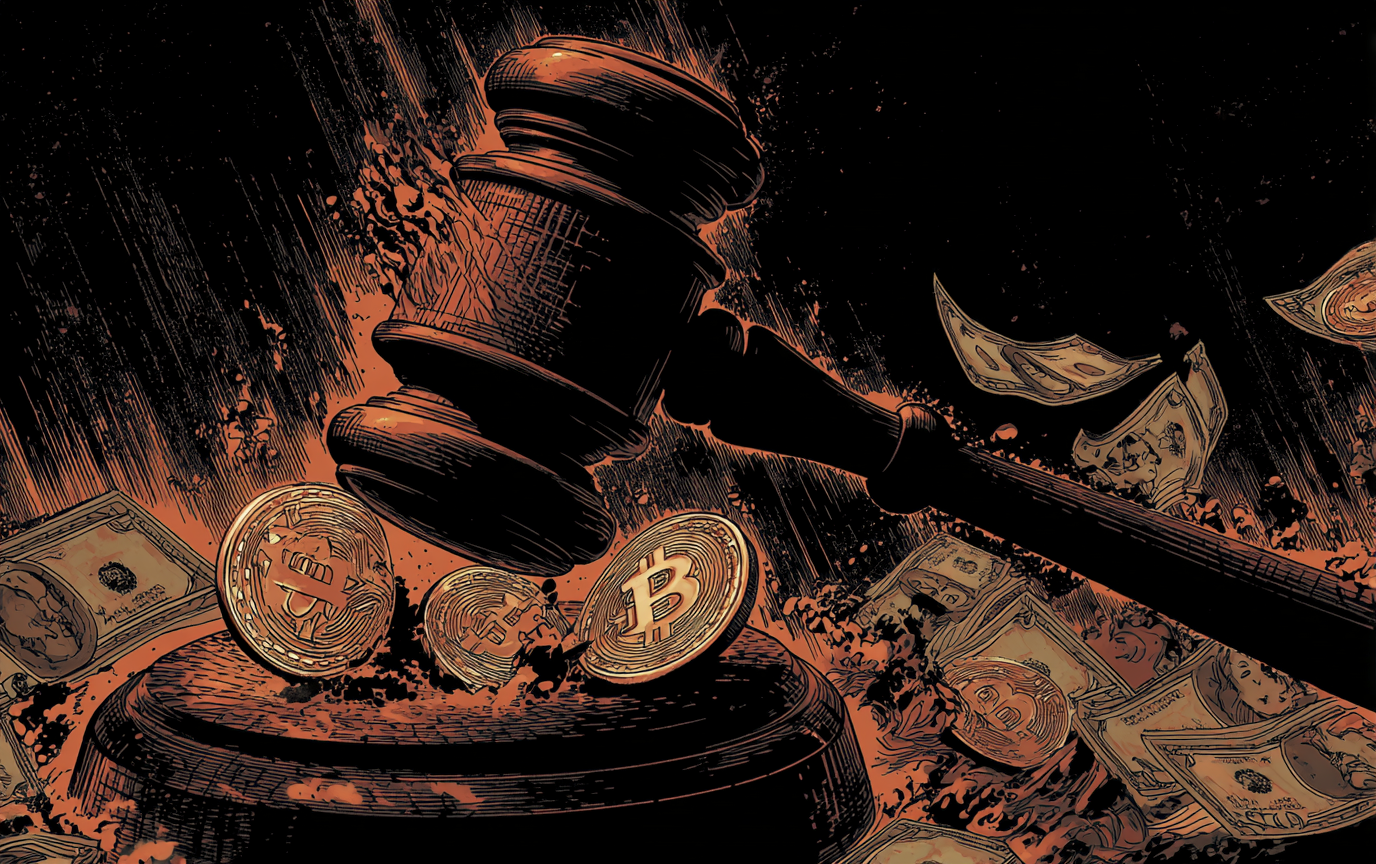Tokenization Was a Joke Until the Bankers Stopped Laughing

Jason Dussault
Chief Executive Officer, Co-Founder

This Post is Disseminated on behalf of Intellistake Technologies Corp.
It’s funny how the same banks that once called blockchain a fad are now predicting trillion-dollar markets built on it.
Standard Chartered, of all institutions, now believes tokenized real-world assets, the bonds, funds, and equities rebuilt on blockchains, could reach two trillion U.S. dollars by 2028¹.
That’s not coming from a start-up trying to raise a round. That’s a 170-year-old bank quietly admitting that the technology it once dismissed has become too efficient to ignore.
Banks don’t forecast trillion-dollar fads.
From Curiosity to Conviction
Five years ago, the same institutions treated tokenization like an unimportant side-project for the interns. Back then, “real-world assets” meant PDFs and post-trade reconciliation. Today, those same institutions are explaining in their whitepapers how bonds can exist as programmable tokens and still meet Basel capital rules..
…that’s quite a turn.
Standard Chartered aren’t alone either. Citi said something similar last year, calling tokenization the “next big thing” in financial infrastructure.2 The difference now is that this latest forecast isn’t about vision, it’s about timing. 2028 isn’t that far away; when a bank sets a date, it’s already building.
You can see the same momentum in smaller moves: Ondo Finance offering tokenized U.S. Treasuries on public blockchains3, or Franklin Templeton issuing a money-market fund on Stellar4.
The rails are ready. The only thing left is scale…
The Why Behind the Number

So why does this matter?
Because when major banks start quantifying the future, they’re not chasing hype, they’re seeking control. Tokenized RWAs represent an attempt to domesticate decentralization.
The inefficiencies of the old system, settlement delays, custodial fragmentation, reconciliation friction, can all be flattened into a single programmable ledger. It’s not revolutionary. It’s tidy …and tidy is what finance secretly craves.
If this infrastructure takes hold, it will change more than how assets move. It’ll change how they’re recorded, governed, and trusted. Every transaction becomes verifiable, every ownership state auditable. For those of us who live in the infrastructure world, that’s not theory; that’s progress.
Now, I know what you’re thinking, validator nodes and tokenized bonds sound like distant cousins. But they share the same DNA: trust without intermediaries.
Every tokenized asset still has to exist on a network that’s secure, redundant, and transparent. That’s infrastructure, precisely the domain Intellistake builds in. As capital moves on-chain, validators, custodians, and service providers will shoulder the responsibility for stability and uptime that clearing houses once did.
In other words: different rails, same accountability.
If RWAs are coming on-chain, then that chain has to be institutional-grade, uptime guarantees, audit trails, transparent governance. That’s where infrastructure businesses like Intellistake step in. Not to reinvent finance, but to make sure it keeps working when the plumbing changes.
The Slow Merge

I sometimes think of this moment as financial Darwinism.
What began as a fringe experiment, “put it on a blockchain, see what happens”, has evolved into a survival mechanism. The market is selecting for efficiency.
Already we’re seeing sovereign debt mirrored on private Ethereum instances, such as stable coins; it won’t be long before the same bonds are native to regulated public ledgers, verified by approved validator sets. And then, eventually, it won’t matter what kind of ledger it is; It’ll just be the system.
That’s the slow merge, where decentralization and compliance stop fighting and start co-existing.
And while two trillion sounds dramatic, it’s barely a fraction of the global securities market. The headline isn’t the size; it’s the trajectory. Once one percent of the world’s capital flows this way …the rest has the potential to follow out of habit.
From Novelty to Necessity

At Intellistake, we’ve watched this pattern before. Staking went through it too. What began as a niche yield mechanic is now an institutional service line, complete with dashboards, SLAs, and risk audits.
Tokenized RWAs should follow the same route, from curiosity to compliance. The infrastructure providers will quietly become the backbone, carrying both the risk and the reward.
So when I see Standard Chartered attach a number like two trillion to this market, I don’t read it as optimism. I read it as surrender. The institutions aren’t predicting the future anymore; they’re preparing for it.
Give it a few years and everyone will call it inevitable. They always do.
For education only, not investment advice. Any forward-looking points are my views today, may change, and include risks.
Disclaimer
There has been significant volatility in digital assets and their value can decline rapidly, which in turn would lead to a decline in the stock price of companies holding digital assets. Intellistake is a start-up that does not have the same access to capital as other larger more established companies.
Intellistake has just commenced operating its business and is at an early stage of development. Intellistake is entering this space by acquiring and operating blockchain validator hardware that supports AI networks and investing in AI-related digital tokens to primarily operate validator hardware.
Intellistake is developing custom AI software systems called "AI Agents" for businesses. It recently announced the development of IntelliScope, a newly designed enterprise artificial-intelligence (AI) suite that applies decentralized AI technologies to deliver transparent and verifiable corporate intelligence. IntelliScope, which is in testing, is being publicly introduced as Intellistake's enterprise AI suite, reflecting the Company's focus on advancing practical applications of decentralized AI technologies.
The IntelliScope suite is being developed as a collection of modular AI agents, each intended to address specific enterprise challenges. Development has advanced through internal closed testing, where functionality is being refined and validated. Built to leverage decentralized AI technologies developed within the ASI Alliance FET token ecosystem, IntelliScope is now preparing to move into closed beta testing with an enterprise client, a phase focused on gathering feedback to shape premium features and expand real-world use cases.
The Company intends to deliver these solutions either as one-time projects or ongoing subscription services. Revenue is expected to come from implementation fees and monthly subscription payments. The Company does not presently have any customers. Intellistake is just commencing operations. It is targeting significant growth but its business is subject to several risks related to general business, economic and social uncertainties; the sufficiency of cash to meet liquidity needs; legislative, political and competitive developments; the inherent risks involved in the digital currency and general securities markets; the volatility of digital currency prices and the additional risks identified in the "Risk Factors" section of the Company’s filings with applicable securities regulators. Intellistake has not yet developed or commercialized its AI solutions.
This report contains "forward-looking information" concerning anticipated developments and events related to the Company that may occur in the future. Forward looking information contained in this report includes, but is not limited to, all statements in respect of the Company's growth and development, the operations and business segments of the Company, expectations regarding the market for gold, digital currencies and decentralized AI, expectations for infrastructure to support digital currencies,support for decentralized AI and blockchain networks, a broader strategy to grow the Company’s position in AI and tech digital assets, revenue generation potential and details regarding staking and validator operations.
In certain cases, forward-looking information can be identified by the use of words such as "expects", "intends", "anticipates" or variations of such words and phrases or state that certain actions, events or results "may", "would", or "might" suggesting future outcomes, or other expectations, assumptions, intentions or statements about future events or performance. Forward-looking information contained in this report is based on certain assumptions regarding, among other things, the Company will continue to have access to financing until it achieves profitability; the technology and blockchain industries in which the Company intends to focus its business in will grow at the rate and in the manner expected; the ability to attract and retain qualified personnel; the success of market initiatives and the ability to grow brand awareness; the ability to distribute Company's services; the Company creates strategies to mitigate risks associated with cryptocurrency price fluctuations; the Company remains compliant with all applicable laws and securities regulations; the Company engages and collaborates with local experts, as necessary, to address jurisdiction-specific matters and ensures compliance with foreign regulations to avoid penalties; the Company addresses any potential cybersecurity threats promptly and effectively; the AI Agent technology can be developed and deployed with real world applications; and the ability to successfully deploy the new business strategy as a result of the change of business. While the Company considers these assumptions to be reasonable, they may be incorrect.
Forward looking information involves known and unknown risks, uncertainties and other factors which may cause the actual results to be materially different from any future results expressed by the forward-looking information. Such factors include risks related to general business, economic and social uncertainties; failure to raise the capital necessary to fund its operations; inability to create strategies to mitigate the risks associated with cryptocurrency price fluctuations; risks relating to the ability to develop the AI Agent technology and relating to the deployment of validator operations; the ability to acquire digital tokens at reasonable acquisition prices; the costs of regulation in the digital asset industries increase to the extent that the Company is no longer generating sufficient returns for shareholders; failure to promptly and effectively address cybersecurity threats; insufficient resources to maintain its operations on a competitive basis; and the actual costs, timing and future plans differs expectations; legislative, environmental and other judicial, regulatory, political and competitive developments; the inherent risks involved in the cryptocurrency and general securities markets; the Company may not be able to profitably liquidate its current digital currency inventory, or at all; a decline in digital currency prices may have a significant negative impact on the Company's operations; the Company's success may depend on the continued involvement of key personnel, including advisors, whose involvement cannot be guaranteed; institutional adoption of decentralized AI infrastructure remains uncertain and may not occur at the pace or scale anticipated; evolving regulatory frameworks, including those related to AI (such as Canada's proposed Artificial Intelligence and Data Act), may impose additional compliance burdens or restrict certain business activities; valuation figures are based on publicly available market data and internal assessments at the time of the referenced transactions and may not reflect current or future valuations; the volatility of digital currency prices; the inherent uncertainty of cost estimates and the potential for unexpected costs and expenses, currency fluctuations; regulatory restrictions, liability, competition, loss of key employees and other related risks and uncertainties; delay or failure to receive regulatory approvals; failure to attract qualified personnel, labour disputes; and the additional risks identified in the "Risk Factors" section of the Company's filings with applicable Canadian securities regulators.
Although the Company has attempted to identify factors that could cause actual results to differ materially from those described in forward-looking information, there may be other factors that cause results not to be as anticipated. Readers should not place undue reliance on forward-looking information. The forward-looking information is made as of the date of this report. Except as required by applicable securities laws, the Company does not undertake any obligation to publicly update forward-looking information.




